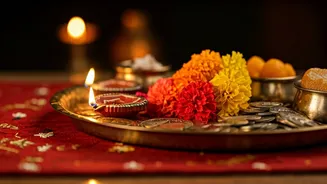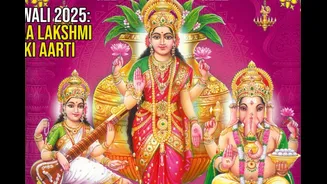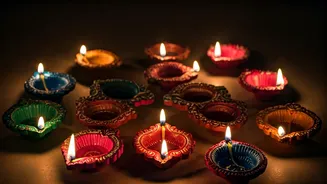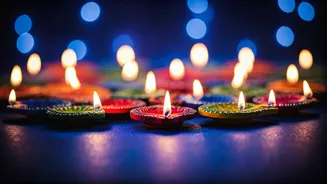Diwali: Festival Significance
Diwali, or Deepavali, is a vibrant five-day Hindu festival, celebrated across India and among the Indian diaspora. Symbolizing the triumph of light over
darkness, good over evil, and knowledge over ignorance, Diwali's core themes resonate deeply. The festival honors various deities, with Lakshmi, the goddess of wealth and prosperity, taking a central role. Homes are illuminated with diyas (oil lamps) and decorated with colorful rangoli patterns. Diwali is a time for family gatherings, gift-giving, and sharing sweets, embodying a spirit of joy and renewal. Each day of Diwali holds significance, from Dhanteras to Bhai Dooj, each filled with its own unique rituals and observances that add to the festival's rich tapestry.
Lakshmi Puja: Core Ritual
Lakshmi Puja is the primary ritual conducted during Diwali. It involves worshipping Goddess Lakshmi, seeking her blessings for prosperity, wealth, and success. The puja is usually performed during the auspicious Muhurat, which is the specific time deemed most favorable. Devotees prepare by cleaning their homes and setting up a puja altar. The ritual typically includes invoking the goddess, offering prayers, chanting mantras, and performing aarti. The aim is to invite Lakshmi into the home, ensuring abundance and well-being throughout the year. The preparation of the puja samagri is essential to ensure a correct and meaningful Puja. These items hold symbolic meanings, contributing to the puja's overall spiritual impact.
Muhurat Timings: Important Dates
The auspicious Muhurat timings for Lakshmi Puja in Diwali 2025 are crucial for timing the ceremony to maximize its spiritual benefits. Precise timings are usually determined based on the Hindu calendar and the astrological positions of celestial bodies. Various sources, including Hindu religious calendars and local pandits (priests), provide the precise Muhurat. The time windows are often specific to geographical locations, so the timings should always be checked according to the city or region. Performing the Lakshmi Puja during the auspicious Muhurat is believed to enhance the chances of receiving Goddess Lakshmi's blessings and inviting prosperity into one's life. The detailed timings will be announced closer to Diwali 2025.
Samagri: Puja Essentials
The samagri, or the items needed for the Lakshmi Puja, is a detailed collection of essentials. This includes items that are considered auspicious and essential to the Puja. These include: idols or pictures of Goddess Lakshmi and Lord Ganesha; diyas and oil; incense sticks (agarbatti); flowers and garlands; sweets and fruits as offerings; betel leaves and betel nuts; coins and currency notes, representing wealth; roli (kumkum) and chawal (rice) for applying tilak; a kalash (pot) filled with water; and a book of Lakshmi Chalisa. Each item holds a symbolic meaning, adding to the spiritual significance of the puja. Proper arrangement and use of these items are critical for adhering to the puja's traditions.
Lakshmi Puja: Step-by-Step
Performing the Lakshmi Puja correctly involves following a detailed step-by-step process. First, the puja space should be cleaned and decorated, usually with a rangoli design at the entrance. The idol or picture of Goddess Lakshmi is then placed on a raised platform, often along with Lord Ganesha. The kalash is set up and filled with water. The puja begins with the invocation of Lord Ganesha, followed by the offering of prayers and the lighting of diyas. Next, Lakshmi is invoked by chanting mantras and offering flowers, fruits, and sweets. The aarti is then performed, followed by the offering of dakshina (monetary offerings). The puja concludes with the distribution of prasad (blessed food) and seeking blessings for prosperity and happiness. Adhering to each step is crucial for the spiritual integrity of the puja.
Puja Vidhi: Deep Dive
The Lakshmi Puja Vidhi is a series of precise rituals. Before beginning, a person should bathe and dress in clean clothes. Start by meditating on Lakshmi's form. Begin by purifying the puja area with water and chanting mantras. Place the idol on a clean platform. Offer flowers, incense, and a diya. Chanting Lakshmi mantras, like the 'Om Shri Maha Lakshmyai Namah', forms a crucial part of the process. The offering of sweets, fruits, and panchamrit (a mixture of milk, yogurt, honey, sugar, and ghee) is a way to express devotion. Perform the aarti with a lit diya while singing the aarti song. Conclude with offering dakshina and seeking blessings. The intention should be pure and focused on inviting prosperity and well-being. Following the vidhi correctly ensures a spiritually enriching experience.













